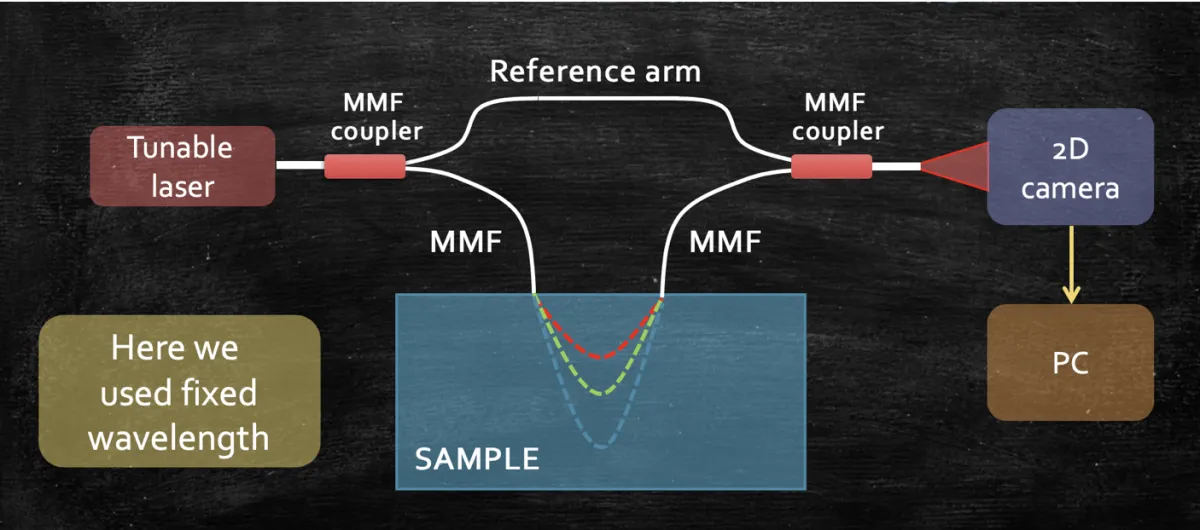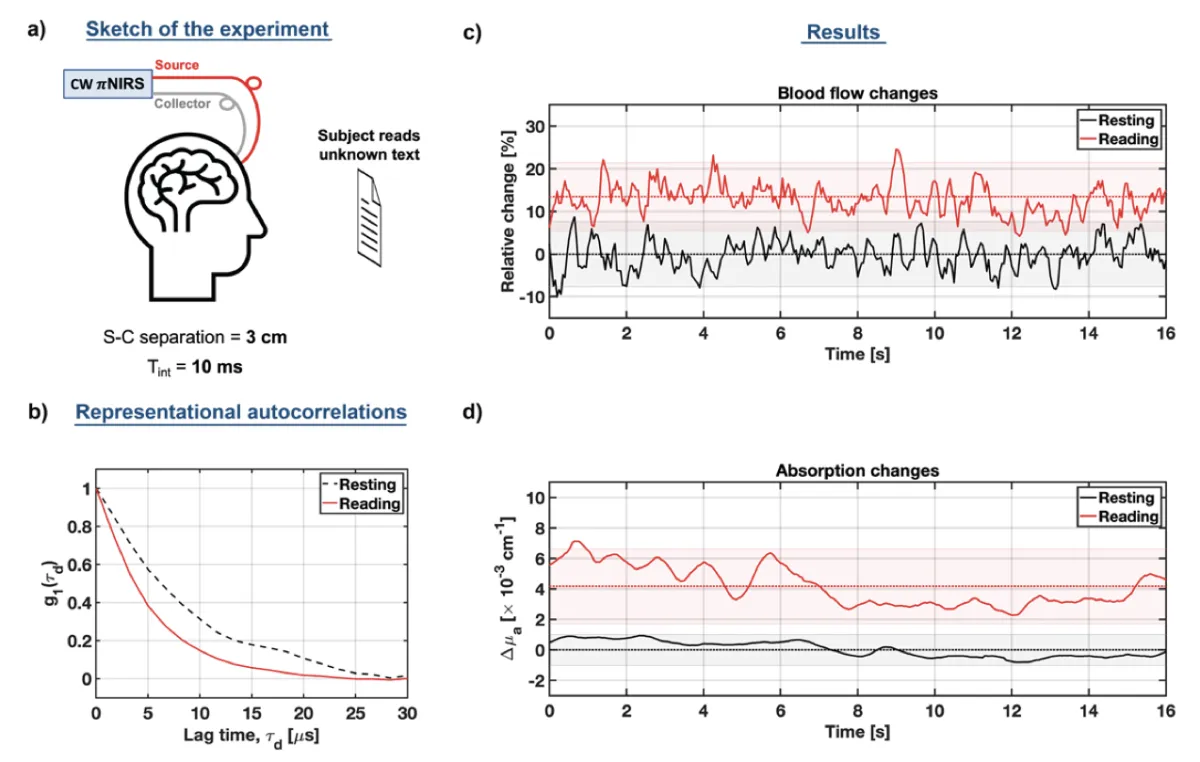piNIRS
Cerebral blood flow plays a crucial role in delivering oxygen and glucose to the brain and removing metabolic by-products. Deviations in CBF can have detrimental effects on brain metabolism, leading to brain damage and various neurological disorders. Noninvasive monitoring of CBF and brain function is of utmost importance in clinical settings to effectively treat brain dysfunctions. While functional magnetic resonance imaging (fMRI) provides valuable information about CBF, it is expensive, limited by motion artifacts, and cannot be used continuously, especially in pediatric populations.
In this project, we propose a novel approach to overcome the limitations of current optical methods for CBF monitoring. Building upon previous research, we focus on parallel multi-channel detection using the interferometric near-infrared spectroscopy (iNIRS) system. By employing an ultra-high-speed two-dimensional camera operating at approximately 1 MHz frame rates, we can leverage each pixel in the recorded image sequence as an individual iNIRS detection channel. The optical signals from each channel are processed and combined to obtain accurate and rapid measurements of CBF changes associated with neural activation.


This research project seeks to significantly advance the field of cerebral blood flow monitoring in humans by enabling rapid and noninvasive measurement systems. The ability to continuously and noninvasively monitor blood flow has the potential to greatly improve the treatment of major brain diseases. Furthermore, the development of rapid cerebral blood flow sensing brings us closer to the realization of a noninvasive brain-computer interface (BCI), which could have transformative benefits for individuals with disabilities.
S. Samaei, K. Nowacka, A. Gerega, Ż. Pastuszak, D. Borycki, "Continuous-wave parallel interferometric near-infrared spectroscopy (CW πNIRS) with a fast two-dimensional camera”, Biomedical Optics Express 13 (11), 5753-5774, 2022